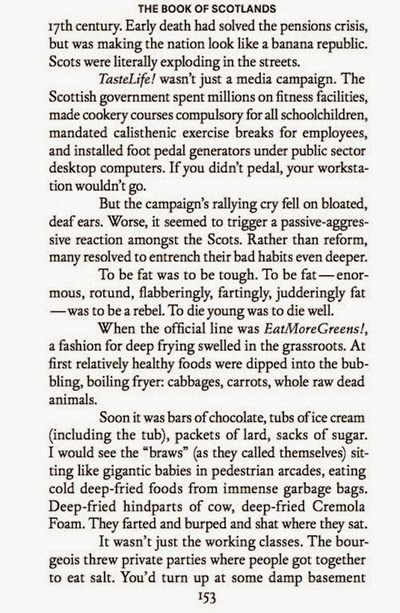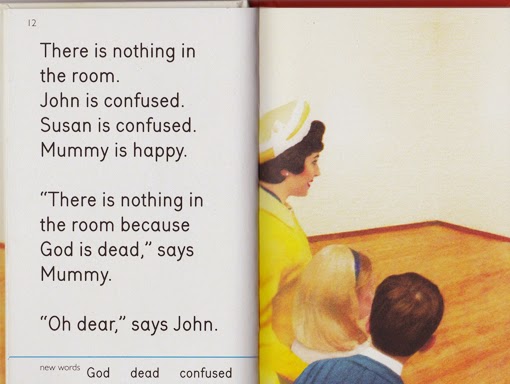A handful of perennial personal favorites continuing on the "mouth music" yarn what
Simon started...
A while back, I paid the early XTC material a revisit for the first time in many years. Came to reappreciate the energy of their early years. Had punk not came along and helped level the field, Partridge would have an unlikely candidate for a frontman, mainly on account of the quirkiness of his songwriting. But what really grabbed my ears was how Partridge hilariously careened all over the place as a vocalist -- impulsively bellowing, barking, yelping, and generally twisting sustained parpings and phonemes every which way.
The above
ursonatal excurison come from the Mr. Patridge side project, which is mostly Partridge dicking about in the studio, reconfiguring the various tracks from songs off the
Drums and Wires LP, crafting them into other things. And get this, someone actually thought this one had lyrics; or at least felt it deserved
transcribing.
Old favorite of mine, mainly for its haunting sparsity.
An early session from Hooker. Lore has it that producers didn't know what to do with Hooker at first, how to place a band around him, due to his sometimes disjointed rhythms. Here the rhythm belatedly enters when you hear Hooker tap it out with his foot, in what sound like a dusty, empty, forgotten space. And then there's the vocal. In which language breaks down completely, proves inadequate for the expressive task at hand. And then, faintly heard as the session abruptly fades out at the end, the sound of Hooker letting out a casual laugh. The whole thing having just been a toss-off, a warm-up exercise, or an off-handed demonstration of a song that could go on for ages.
A totemic favorite, I gather, of writer and music scribe David Toop, who’s written very elegantly about the recording and sonics of
There’s a Riot Goin’ On. The portrait he painted was one of Stone entering his long period of decline -- beginning to unravel, coke-addled, paranoid and reputedly keeping a gun within arm’s reach during the sessions. And -- during the session’s more “quiet” numbers -- leaning forward over the keyboard as he sang, singing in a lower register than usual, his mouth intimately close to the mic, with the engineers pushing the slider high enough to send the vocal track squarely into the red. The results giveing Stone’s vocal a strong physicality -- leaving the listener with a sense of every vowel, syllable and word being shaped within the cavity of the singer’s mouth, of the curl of the tongue, the tightening of the larynx, the lips stretching across teeth.
To the degree that Leon Thomas is remembered, it’s mostly to the degree that he provided vocals on a couple of Pharoah Sanders sessions in the late ‘60s, not so much for the series of LPs he released on the Flying Dutchman labels in the years that immediately followed. Most distinctive trademark: dispensing with traditional “scat” singing and replacing it a peculiar combination of throat singing and yodeling.
And perhaps stretching the 'mouth music' criteria a bit...
Like a lot of early modern compsoers, Leoš Janáček incorporated elements of folk melodies into many of his works. Except he took it one step further, aiming to craft musical passages modeled on the patterns and prosody of the Czech language as spoken in the streets and markets, in the course of passing conversation or storytelling. As uneven as her output might be, at her finer moments Iva Bittova takes a page from Janáček and ventures further down that path.
And I suppose the above turned out as a proper round robin pan-genre edition. Assurance that I didn’t plan it that way, but there you have it.









































